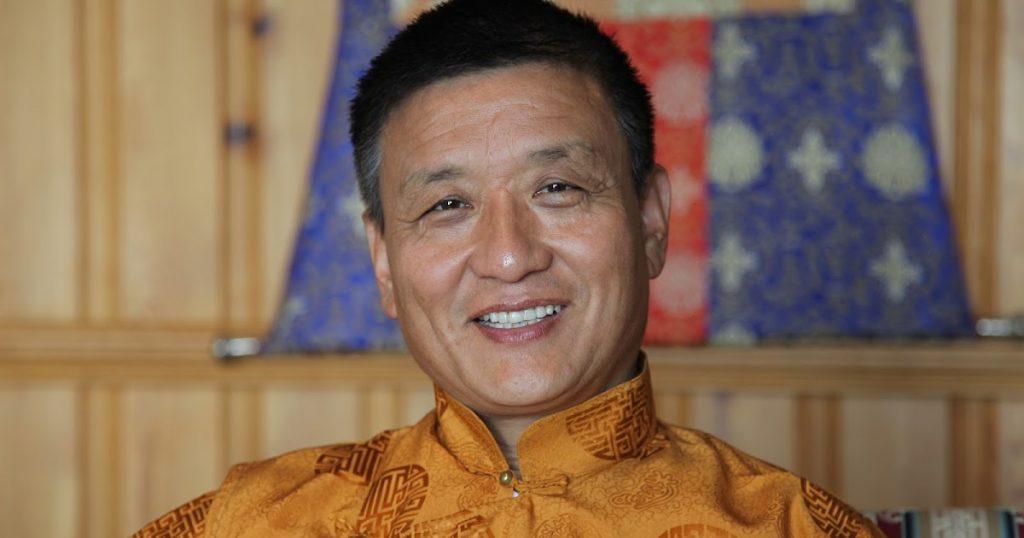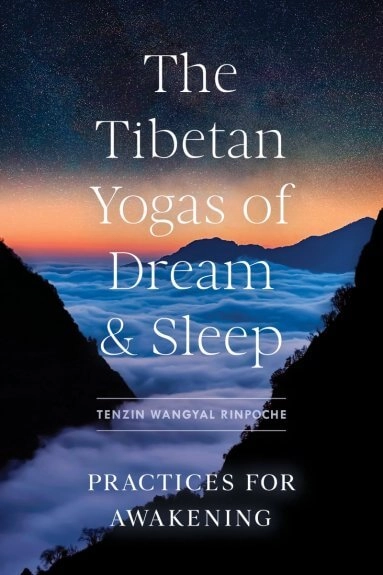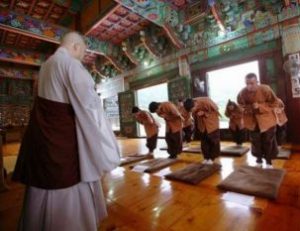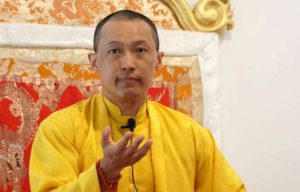
In August last year, Shambhala Publications released a revised and updated edition of Geshe Tenzin Wangyal Rinpoche’s 1998 book The Tibetan Yogas of Dream and Sleep. This welcome new second edition benefits from being expanded with teachings given by Rinpoche during workshops and retreats over the last few years.
Tenzin Wangyal Rinpoche is the founder of Ligmincha International, an organization dedicated to preserving the spiritual teachings of the Bön tradition indigenous to Tibet. After training as a monk, Rinpoche chose a family life, which has given him a highly valuable and less common perspective on spiritual practice compared with many gurus—one that is human, real-life, and accessible to all who learn from him.
Rinpoche reminds us of the significant number of years in our life that we spend asleep. And while it’s true that, by the standard definition, we are unconscious during those years, every 24 hours we have another wonderful opportunity to practice enough awareness to better prepare ourselves for the “one-shot deal” at the end of this (each) mortal life; to gain enough awareness to help us skillfully navigate the Bardo realm and our rebirth. Practice during our waking hours is a wonderful thing, but if we slip into uncontrolled, unaware dreams during sleep, we have little to no chance of managing the moment of physical separation at death. We have one moment to get it right, and that moment determines our next rebirth, so let’s try to not mess this up! This practice of sleep yoga also quite simply expands the time we are able to practice, which many students will no doubt find appealing.
The teachings in this book remind me of the lessons we are also learning from fields such as neuroscience: that we can physically change our brain when we become aware of a lifetime of conditioning and habit-building, and thereby break the tendencies of a learned personality.
This presents an opportunity to change the habits of who we are and who we’ve become in order to create a version of who we want to be. Or, more significantly, breaking the conditioning of who we’ve become in order to regain who we truly are. This daily awareness, as Rinpoche reminds us, conditions the mind for nightly awareness, which prepares us for transition.
And it is with this concept in mind, both spiritually and psychologically, that Tenzin Wangyal Rinpoche really taps into a train of thought—and one I had already been ruminating: to treat life as a dream. Rinpoche emphasizes not being careless or silly in approaching this idea. No jumping from high-rise buildings assuming that we can fly or any other such manifestations of risky fantasy. Instead, this approach gives us an objective view of our life experiences that we typically view in a subjective way. And this can really help to lift us out of our emotional quagmires and personality-forming behavioral patterns.
At first, the practice of viewing life as a dream may feel like living in a fantasy version of one’s self, giving us an almost unusual sense of confidence. Suddenly we’re the protagonist in our own life story again, much as we were in childhood, but this time less naive. The emphasis here is on the feeling body.
Those who promulgate the law of assumption (manifesting a desired reality by virtue of mentalism) emphasize the importance of feeling; that the intellect alone is not enough. One can’t simply think or even imagine it—it has to be felt. It has to be real to the emotional body. Arguably, we’re shifting an imagined thought into a feeling experience and moving that into our fascial system, which our entire being then registers as real. This new visceral “reality” is by conscious design, which can reform a formed personality as well as a physical reality. However, it is more about the revaluation of our kunzhi (primordial ground of being) awareness and luminous rigpa (knowledge of the ground) mind. In fact, it is in his very relatable language that Rinpoche discusses subjects that are only now being revealed in the realm of quantum physics: how meditation can take us into the space between the tiniest known particles, the space of the unknown that is the vast majority of our known reality. Oh the oxymoron.

Tenzin Wangyal Rinpoche’s book covers everything from a history of dream yoga through to profound practices beautifully, eloquently, and deeply. He discusses the value of visualization (and as a visual artist myself, I place great value on how gentle focus on a deity can help bring the mind and body into the “zone”), and how yidam visualization can help shift and manifest attributes within us. This is not least thanks to our mirror neurons reflecting and mimicking what is held in front of them, as image or as culture, through to how to fall asleep while remaining fully cognizant. Rinpoche discusses differing forms of dreams, and, of course, how maintaining responsible vigilance is important. For example, consider the error of deriving guidance from a dream that was a product of indigestion. Or how we can risk falling into the trap of magical thinking, where we may self-aggrandize or assume a soothsayer’s attitude in daily life?
This book is full of incredible teachings and information from which we are privileged to benefit. Rinpoche is fully aware that the subject of dreams is one of fascination in the West, not least since the turn of the last century, for pioneering psychologists and psychiatrists such as Carl Jung and Sigmund Freud. But in these teachings, Rinpoche takes us deeper—beyond the psychological, beyond the collective unconscious, and into the essence of mind itself.
If we do indeed live in a non-duel ocean of conscious awareness, where we’re reminded that there is nothing to seek or transcend, then the act of anything other than being seems counterproductive. The imaginal is merely a construct of the ego, and yet we practice and seek enlightenment regardless. This dichotomy and dissonance of reality is skillfully addressed by Rinpoche in this book. The practices he offers can help us remain lucid in our dream state and retain rigpa during the sleep state, and in doing so revitalize our waking reality while handing us the “passport” to liberation from the “airport” of the Bardo.
This is less a book and more a user manual. One we need to read until we understand it. But reading alone won’t render results. This is practical instruction, which we would do well practice nightly. Like breathing, the concept alone isn’t as effective as the practice.
References
Wangyal Rinpoche, Tenzin. 2022. The Tibetan Yogas of Dream and Sleep: Practoces for Awakening (Second Edition). Boulder, CO: Shambhala Publications.
See more
The Tibetan Yogas of Dream and Sleep (Shambhala Publications)
Ligmincha International
Related features from BDG
Book Review: Talking Zen by Alan Watts
Book Review: Zen Master Tales: Stories from the Lives of Taigu, Sengai, Hakuin and Ryokan
Book Review: How We Live Is How We Die by Pema Chödrön













Non-dual, not non-duel, although I suppose that, too.
Not sure we should throw down the gauntlet, are you?